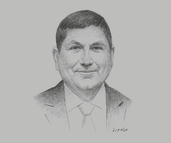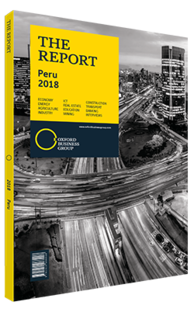Marco Antonio Zaldívar, Chairman, Lima Stock Exchange : Interview

Interview : Marco Antonio Zaldívar
How can the participation of retail investors in the market be enhanced, and what are the main challenges to increasing investment?
Marco Antonio Zaldívar: The retail market practically disappeared years ago. The Lima Stock Exchange has been overly regulated, which has traditionally limited its capacity to innovate, thus hindering an increase in its retail investor base. The current challenge is to attract small retail investors, most of whom tend to invest in the $8bn of mutual funds. It is worth noting that at its peak, the Lima Stock Exchange had 7000 retail investors. Today, there are less than 4000, with an average investment portfolio of PEN5000 ($1540).
Furthermore, there are an additional $4bn in private and public funds from retail investors. These funds are key to attracting the middle class and promoting a culture of investment in capital markets, especially when considering that the middle class accounts for 7m people. However, this cannot be achieved with the current banking penetration rate, which is as low as 39%. We can increase the pool of retail investors by giving them access to terminals to gain direct investment.
What role can financial technologies and digitalisation play in the Lima Stock Exchange?
ZALDÍVAR: The digitalisation of the Lima Stock Exchange is key; however, regulation has yet to be modernised. The regulator should consider that in a country with high levels of informality like Peru, and with technologies such as blockchain being easily accessible, the lack of a modern regulatory framework could open the door to parallel markets.
There is vast room to incorporate financial technologies. Only 10% of transactions were done with machines in 2017, which were processed by one brokerage firm alone. The remaining 90% were processed manually, increasing the cost and inefficiency of every operation. This is due to the requirement of physical signatures for operations, thus limiting the potential scope for digitalisation. It is expected, however, that the number of automated operations should increase gradually, and the regulation will incorporate the usage of electronic IDs instead of physical signatures.
What improvements can be expected if Peru joins the OECD Corporate Governance Committee?
ZALDÍVAR: Any improvements that may come as a result of Peru being accepted into the OECD Corporate Governance Committee will strictly depend on the regulator. It is important to take into account that the OECD only issues recommendations and that its framework is broad enough for members to choose various ways of compliance. The regulator and the Lima Stock Exchange are working on improving corporate governance regulations and enhancing the perception of corporate governance in Peru.
In 1996 the Capital Markets Law was created, covering all the principles of corporate governance for listed companies. In 2001 and 2013 new frameworks were implemented, with both approaches adopting a “comply and explain” strategy. The challenge with such a method is that there are no consequences if brokerage and listed firms defy the rules. Furthermore, auditing committees for listed companies should be mandatory, not merely suggested. The regulatory framework should require minimum corporate governance standards that all listed companies must comply with, and establish a ceiling to which all regulated companies aspire to reach.
Regulation also recommends regulated companies to have an independent board of directors, and defines what constitutes this through a list of eight criteria that must be met. However, these criteria are so strict that it is virtually impossible to meet all of them, which means that they should be adapted. In this regard, the Superintendency of Banking, Insurance and Private Pension Funds implemented measures under the label “risk norms”, which is effective as of April 1, 2018. Many measures are indeed corporate governance regulations.
You have reached the limit of premium articles you can view for free.
Choose from the options below to purchase print or digital editions of our Reports. You can also purchase a website subscription giving you unlimited access to all of our Reports online for 12 months.
If you have already purchased this Report or have a website subscription, please login to continue.

